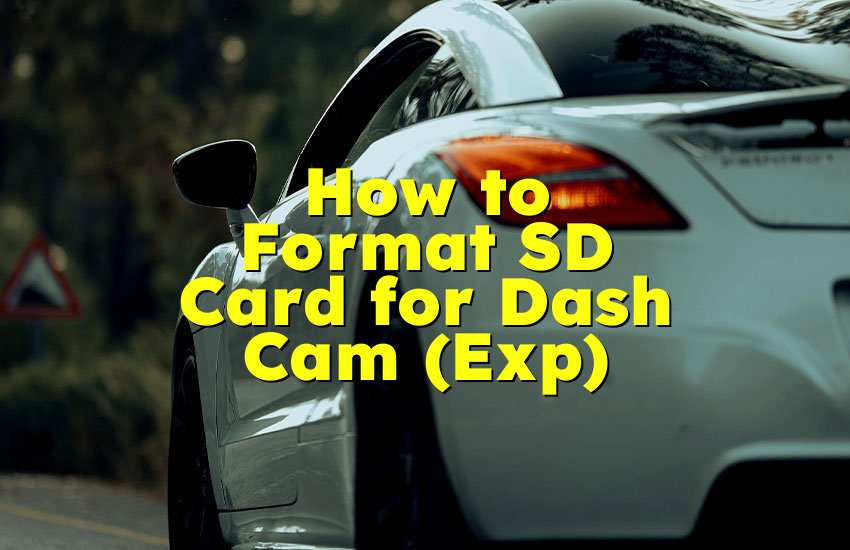As an Amazon Associate, I earn from qualifying purchases at no extra cost to you.
How to Use Tesla Supercharger With Other Cars (Expert Guide)
Charging your electric car can be tricky. Imagine pulling up to a Tesla Supercharger and wondering, "Can my car even use this?" It feels confusing. You see all these Teslas zooming past, and your car sits idle. What if you could tap into the same fast charging network without a Tesla? It's possible, but you need the right tools, knowledge, and patience.
Using Tesla Supercharger With Other Cars Made Simple
Understanding Compatibility and Requirements
Not every car can charge at a Tesla Supercharger. Tesla uses a unique connector called the Tesla plug in the US and Europe. Other cars usually use CCS, CHAdeMO, or Type 2 connectors. So, the first step is knowing what your car supports. You might need a special adapter to bridge this gap.
Adapters are becoming more common. Some companies make Tesla-to-CCS or Tesla-to-Type 2 adapters. You have to check the adapter's certification and safety ratings. Using an uncertified adapter can damage your car or the charger. Safety always comes first.
Next, know the charging speed your car can handle. Tesla Superchargers are very powerful. If your car cannot accept high power, it will charge slower. Don't expect a Tesla-like speed unless your car supports it. Slow charging is safer than forcing full speed.
Finally, consider the software and payment. Some Tesla Superchargers require a Tesla account. Others allow third-party apps. Check if the network supports your car before driving there. Planning ahead avoids frustration and wasted trips.
- Check your car's charging port type
- Use certified adapters only
- Know your car's maximum charging speed
- Confirm network compatibility and payment options
Preparing Your Vehicle Before Charging
Before connecting to a Supercharger, your car needs some preparation. Make sure your battery is healthy. Avoid plugging in if the battery is too hot or too cold. Extreme temperatures can slow charging or even cause errors.
Next, inspect the charging port for dust, dirt, or damage. A clean port ensures a good connection. Also, make sure your car software is up to date. Manufacturers sometimes release updates that improve charging compatibility or efficiency.
Check tire pressure and battery level too. A fully inflated tire and good battery condition make charging more efficient. You also need a parking spot that allows you to connect the adapter easily. Small adjustments make a big difference.
Finally, keep safety gear nearby. Gloves and a flashlight can help in dimly lit stations. Always follow safety instructions. Supercharging is fast and powerful, so caution matters.
- Check battery health and temperature
- Inspect charging port and clean if needed
- Update car software
- Prepare a safe and accessible parking spot
Finding Compatible Supercharger Locations
Not all Superchargers are ready for other cars. You need to locate stations that accept adapters. Use apps or websites that list compatible Superchargers. Some stations only allow Tesla vehicles. Others are part of pilot programs for non-Tesla EVs.
Plan your route carefully. Some chargers may have limited availability. If a Supercharger is crowded, you might wait a long time. Scheduling your charging stops saves frustration. Look for stations with multiple stalls to avoid long waits.
Check the station's power output too. Some older Superchargers may not support high-speed charging for non-Tesla cars. Make sure your car can handle the available power safely. Also, review the station's hours and any restrictions.
Finally, read reviews from other EV drivers. They often share useful tips about accessibility, ease of connection, and reliability. This helps you avoid surprises.
- Locate stations that allow adapters
- Use route planning for convenience
- Check power output and compatibility
- Read other driver reviews
Connecting Your Car Safely
Connecting your car requires careful attention. First, park close enough to the charger without blocking others. Make sure your car is aligned so the cable can reach easily. Then, inspect the charging cable for damage. Damaged cables are dangerous.
Next, attach your adapter properly. Ensure it clicks or locks in place according to instructions. Connect the adapter to your car port securely. If it doesn't fit, don't force it. Misalignment can damage both the car and charger.
Once connected, monitor the charging start. Some stations may require confirmation via an app or card. Check the charging screen to confirm power flow. Stay nearby for the first few minutes to catch any errors.
Finally, keep emergency contacts ready. Know how to stop charging quickly if something goes wrong. Safety is the top priority when using a system designed for a different car.
- Park safely and close to the charger
- Inspect cables and adapters
- Connect carefully and check alignment
- Monitor charging and keep safety contacts ready
Monitoring Charging and Optimizing Speed
Once charging starts, keep an eye on the screen. Some cars display charging speed in kilowatts. Tesla Superchargers can deliver very high power. If your car shows slower speeds, don't worry. It's normal for non-Tesla cars.
Temperature affects speed too. If the battery heats up, the car will reduce charging power to protect the battery. Cold batteries charge slower as well. You can precondition the battery if your car supports it. This improves efficiency and reduces stress on the battery.
Also, avoid leaving the car too long. Superchargers often charge faster at lower battery levels. Once you reach 80%, the charging rate slows significantly. Leaving the car plugged in for hours wastes time and may incur idle fees.
Use apps to track progress remotely. Many EV apps send notifications when charging reaches a certain level. This allows you to plan your next stop without waiting unnecessarily.
- Watch the charging screen and speed
- Precondition battery if possible
- Stop charging around 80% for efficiency
- Use apps for remote tracking
Ending Charging and Disconnecting
Finishing the charging process is simple but requires attention. First, stop the session using the app or charger screen. Some adapters may have locks, so release them before unplugging. Do not pull the cable forcefully.
Next, remove the adapter carefully. Check both the car port and adapter for any debris or wear. Store the adapter safely in your car. Damaged or loose adapters can cause problems in future sessions.
Close your car charging port properly. Some cars need a manual cover, while others close automatically. Make sure the port is secure to protect against dirt and water. Also, thank other drivers if needed. Being polite at shared stations improves community relations.
Finally, move your car promptly. Superchargers are high-demand spots. Freeing the space quickly allows the next EV driver to use it. Responsible use ensures the station remains friendly and accessible.
- Stop charging safely
- Remove adapter and check for damage
- Close the charging port securely
- Move the car promptly for others
Paying and Keeping Records
Some Superchargers require payment even with adapters. Tesla may allow third-party payment apps in certain regions. Check the payment options before you plug in. Having your payment ready avoids stress.
Keep a record of each session. Note the location, power delivered, and duration. This helps track costs and battery health. Regular monitoring ensures your car is performing efficiently.
Also, review your bills carefully. Some apps or cards may overcharge or misreport energy used. Confirm the numbers match your session to avoid surprises. You can also compare costs with other charging networks.
Lastly, share feedback. Reporting any issues or helpful tips improves the charging network. It also helps other non-Tesla drivers enjoy the service safely and effectively.
- Check payment options before charging
- Record session details for tracking
- Review bills carefully
- Provide feedback to improve network
Final Thoughts
Using a Tesla Supercharger with other cars is possible with the right tools, knowledge, and care. Adapters, planning, and monitoring make the process smooth. Safety is always the priority. With preparation, you can enjoy fast charging and save time. Respecting rules and other drivers ensures a positive experience. It's a simple way to expand your EV options and make long trips easier.
| Task | Details | Tips |
|---|---|---|
| Check compatibility | Confirm your car port type and max charging speed | Use certified adapters only |
| Prepare vehicle | Inspect battery, port, and tires | Update software and clean port |
| Find stations | Use apps and reviews | Choose stations with multiple stalls |
| Connect safely | Park properly, inspect cable, attach adapter | Stay nearby initially |
| Monitor charging | Watch speed, precondition battery | Stop around 80% for efficiency |
| Disconnect | Stop session, remove adapter, close port | Move car promptly |
| Payment | Check options, keep record | Review bills and provide feedback |
Do Tesla Superchargers Work With All EVs?
Tesla Superchargers are not universal. Most EVs cannot connect without adapters. Tesla uses its own proprietary connector in the US and Europe. Non-Tesla cars often use CCS, CHAdeMO, or Type 2 ports.
Adapters can bridge the gap. Tesla-to-CCS adapters are the most common. However, not all Superchargers allow third-party cars yet. Some pilot programs in Europe and the US are expanding access slowly.
Speed varies by car. Non-Tesla vehicles often charge slower than Tesla models. The car's battery management system regulates power to protect the battery. Safety is prioritized over maximum speed.
Always check compatibility before driving to a Supercharger. Use apps and networks that confirm your car can charge there. Planning avoids wasted trips and frustration.
Can Non-Tesla EVs Charge at Any Tesla Supercharger?
Not every Supercharger station supports non-Tesla cars. Some locations are restricted to Tesla vehicles only. Others allow third-party EVs through pilot programs. The availability varies by country and region.
The station's software may require a Tesla account. Non-Tesla drivers might need a special app to start charging. Always confirm the access method before arriving. Otherwise, you could be left waiting.
Adapters are essential. Without a proper adapter, the connection is impossible. Make sure the adapter is certified and fits your vehicle securely. Damaged or loose adapters can create safety risks.
Check power limits too. Older Superchargers may not provide full speed for non-Tesla cars. Your car may charge slower, but it is still useful for long trips. Knowing this in advance avoids surprises.
Do Adapters Work Safely With Tesla Superchargers?
Yes, certified adapters can work safely. They convert Tesla connectors to your car's port type. However, safety depends on quality. Low-quality adapters can overheat or fail. Always choose adapters from reputable brands.
Adapters can limit speed. Tesla Superchargers are very powerful. If your adapter cannot handle full power, your car will charge slower. This is normal and helps protect your battery.
Installation matters too. Connect the adapter carefully. Never force the plug into the car port. Misalignment can damage both the car and charger. Always inspect cables and connectors before use.
Monitoring is important. Watch the charging screen during the first few minutes. If anything seems unusual, stop immediately. Safety should always come first when using adapters.
Can Using Tesla Superchargers Damage My EV?
Improper use can cause issues. Using non-certified adapters or forcing connections may damage your car. Overheating, software errors, or port damage are possible risks.
Charging speed affects the battery. Non-Tesla cars may not handle high power efficiently. The car's battery management system usually prevents damage. Still, slow and steady charging is safer.
Environmental conditions matter. Extreme cold or heat can affect charging performance. Preconditioning your battery improves efficiency and reduces stress. Always consider weather before charging.
Proper planning prevents problems. Confirm station compatibility, use certified adapters, and monitor the session. Following these precautions keeps your EV safe and charging efficient.
Frequently Asked Questions (FAQs)
Is it safe to use Tesla Superchargers with any EV?
Yes, it can be safe if you follow guidelines. Certified adapters are required. Check your car's compatibility and charging speed. Always monitor the session. Never force connections. Precondition your battery in extreme temperatures. Inspect cables and ports before connecting. Stop charging if any warning appears. Planning your route and using the correct app ensures safety. Following these steps keeps both your car and the Supercharger protected.
Can I charge my EV without an adapter at a Tesla Supercharger?
No, adapters are necessary for non-Tesla cars. Tesla connectors do not fit other EV ports directly. Attempting to force a connection can damage your car and the charger. Certified adapters are designed to ensure a secure fit. They also regulate power safely. Some stations may offer specific pilot programs, but most still require an adapter. Always check before arriving to avoid wasted trips. Using the right adapter protects both your vehicle and the charging network.
Do I need a Tesla account to use the Supercharger?
It depends on the station. Some Superchargers require a Tesla account to start charging. Others accept third-party apps or cards. Always check the payment options before arriving. Having your account or app ready saves time. Some stations also have pilot programs allowing non-Tesla cars without a Tesla account. Planning ahead avoids confusion and waiting. Confirm access methods to make your charging experience smooth and hassle-free.
Is it cheaper to charge a non-Tesla EV at a Supercharger?
Costs vary by location and station. Tesla Superchargers often charge per kilowatt-hour or minute. Non-Tesla drivers may pay slightly more depending on fees. Using third-party apps can affect the price. Some stations have idle fees for leaving the car plugged in too long. Comparing costs with other charging networks helps find the best option. Charging efficiently around 80% also reduces costs. Always monitor your sessions to avoid unexpected charges.
Can I use any Tesla Supercharger adapter for my car?
No, only certified adapters are safe. They must match your car's port type and support charging speed. Using uncertified adapters can cause overheating or damage. Always check compatibility before buying. Follow the installation instructions carefully. Monitor the charging session during the first few minutes. This ensures everything works correctly. Investing in a reliable adapter protects both your EV and the Supercharger.
Do I need to move my car after charging?
Yes, it's important to move your car promptly. Superchargers are high-demand spots. Leaving your car plugged in blocks others and may incur idle fees. Moving quickly helps maintain community respect. It also prevents unnecessary waiting for other drivers. Always plan charging stops to minimize downtime. Efficient use keeps the station friendly and accessible for everyone.
Is monitoring charging really necessary?
Absolutely. Non-Tesla cars may charge slower or experience errors. Monitoring ensures safe operation. Watch speed, battery temperature, and connection status. If something seems wrong, stop immediately. Preconditioning batteries improves efficiency. Using apps for notifications helps avoid long waits. Monitoring also protects your car and ensures the session completes safely. It's a simple habit that prevents problems.
Can I use Tesla Superchargers for long trips in non-Tesla cars?
Yes, with planning. Use certified adapters and check compatible stations. Monitor charging sessions carefully. Stop around 80% for efficiency. Plan your route to include multiple stations. Be aware of charging speed limits. Precondition the battery when possible. Respect station rules and move the car promptly. Long trips are feasible but require preparation and attention to detail.











